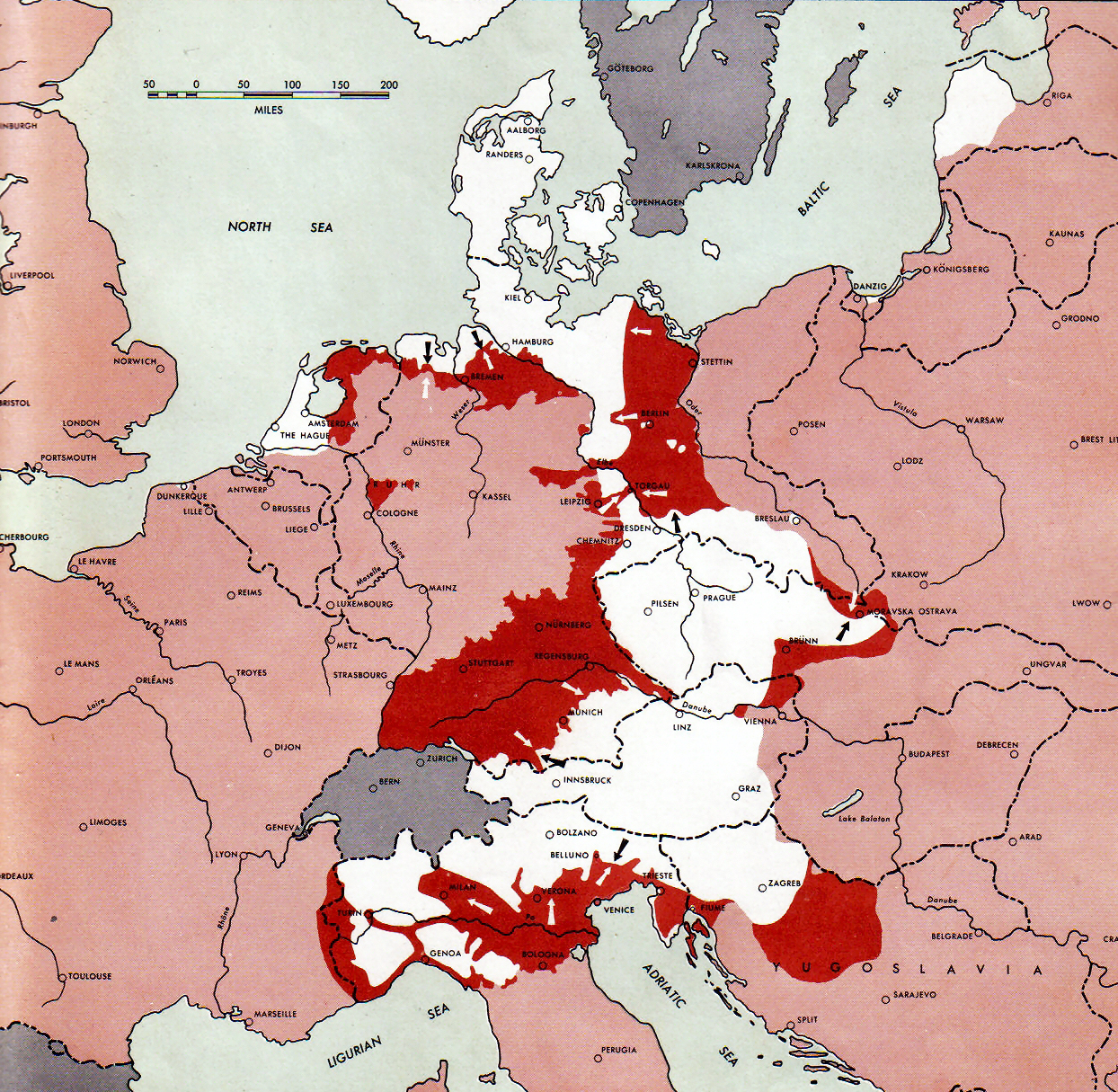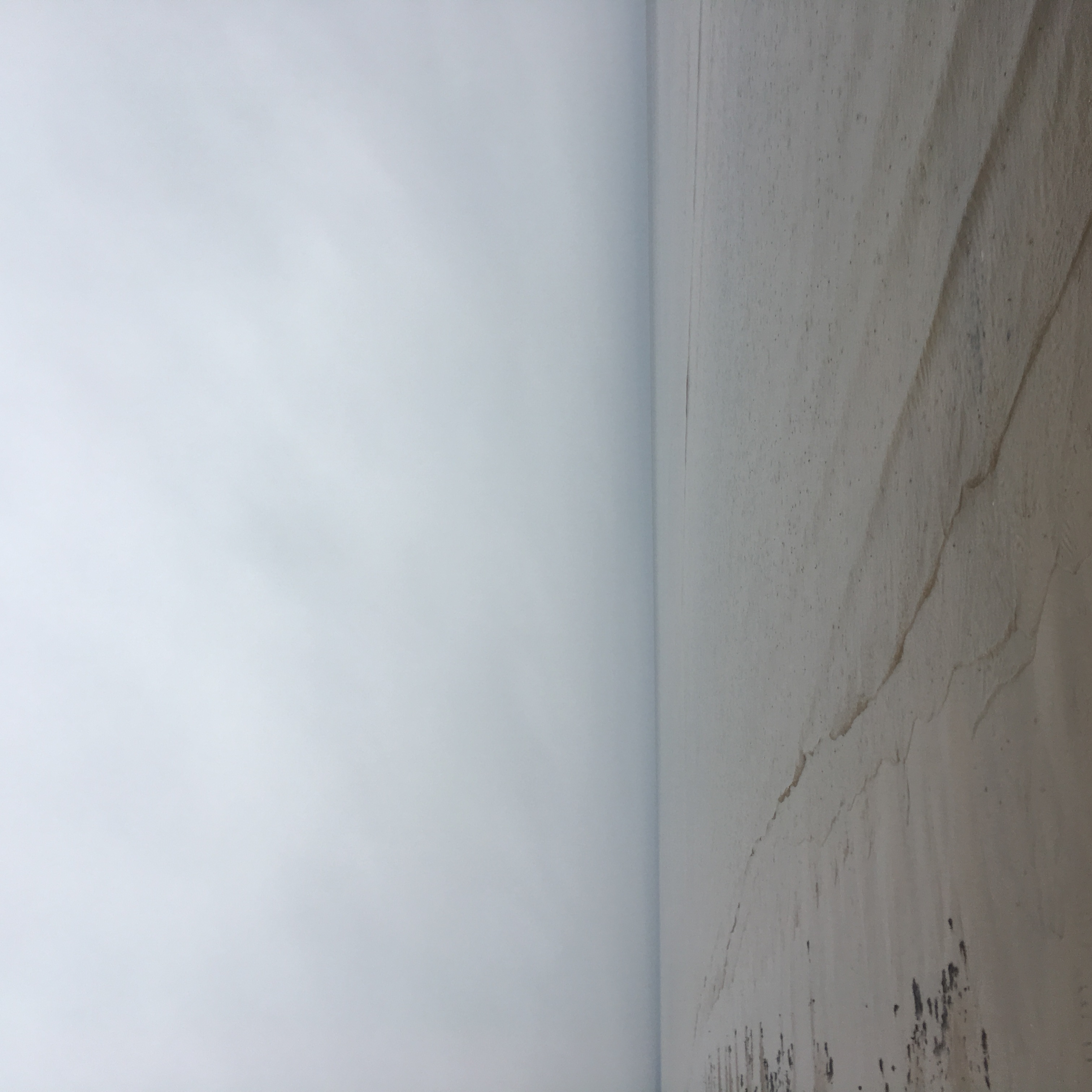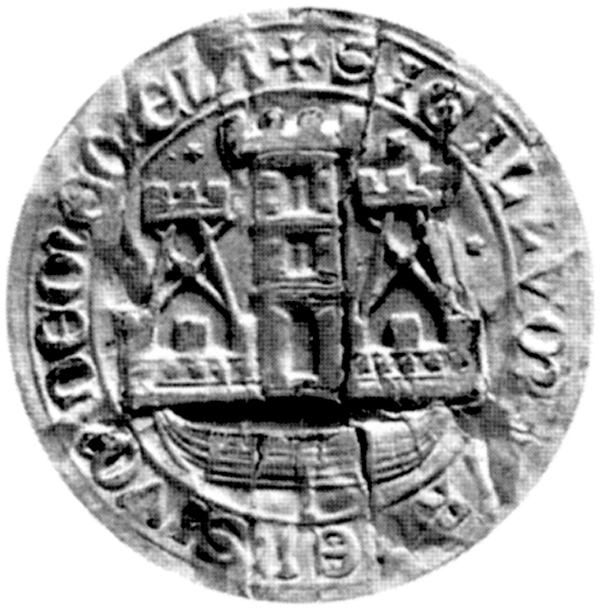|
Courland Pocket
The Courland Pocket (Blockade of the Courland army group), (german: Kurland-Kessel)/german: Kurland-Brückenkopf (Courland Bridgehead), lv, Kurzemes katls (Courland Cauldron) or ''Kurzemes cietoksnis'' (Courland Fortress)., group=lower-alpha was an area of the Courland Peninsula where Army Group North of Nazi Germany and the Reichskommissariat Ostland were cut off and surrounded by the Red Army for almost a year, lasting from July 1944 until 10 May 1945. The pocket was created during the Red Army's Baltic Offensive, when forces of the 1st Baltic Front reached the Baltic Sea near Memel (Klaipėda) during its lesser Memel Offensive Operation phases. This action isolated the German Army Group North from the rest of the German forces, having been pushed from the south by the Red Army, standing in a front between Tukums and Libau in Latvia, with the Baltic Sea in the West, the Irbe Strait in the North and the Gulf of Riga in the East behind the Germans. Renamed Army Group Courl ... [...More Info...] [...Related Items...] OR: [Wikipedia] [Google] [Baidu] |
Gulf Of Riga
The Gulf of Riga, Bay of Riga, or Gulf of Livonia ( lv, Rīgas līcis, et, Liivi laht) is a bay of the Baltic Sea between Latvia and Estonia. The island of Saaremaa (Estonia) partially separates it from the rest of the Baltic Sea. The main connection between the gulf and the Baltic Sea is the Irbe Strait. The Gulf of Riga, as a sub-basin of the Baltic, also includes the Väinameri Sea in the West Estonian archipelago. Geography Extent The International Hydrographic Organization defines the Gulf of Riga's western limit as "A line running from Lyser Ort (57°34'N), in Latvia, to the South extreme of Œsel Island, through this island to Pammerort (22°34'E), thence to Enmast Point, the S extreme of Dagö, through Dagö to Takhkona Point, the North extreme thereof, and on to Spithamn Point in Estonia". Islands Major islands in the gulf include Saaremaa, Kihnu, and Ruhnu, which are all controlled by Estonia. Kihnu covers an area of . Saaremaa island is responsible for ... [...More Info...] [...Related Items...] OR: [Wikipedia] [Google] [Baidu] |
1st Baltic Front
The First Baltic Front (Russian language, Russian: Пéрвый Прибалтийский фронт) was a Front (military formation), major formation of the Red Army during the Second World War. It was commanded by Army General Andrey Yeryomenko, succeeded by Army General Hovhannes Bagramyan, Bagramyan. It was formed by renaming the Kalinin Front on 12 October 1943, and took part in several important military operations, most notably Operation Bagration, Bagration in the summer of 1944. The 1st Baltic Front also assisted in lifting the siege of Leningrad on 27 January 1944, as well as in Battle of Königsberg, Operation Samland, at that time known as the Samland Group, captured Königsberg in April 1945.Jukes. Stalin's Generals, p. 30 Composition As of 23 June 1944, the First Baltic Front consisted of the following units and their commanders: Baltic Front, led by front commander Army General Hovhannes Bagramyan 4th Shock Army, led by General-Lieutenant Pyotr Malyshev *83rd Rif ... [...More Info...] [...Related Items...] OR: [Wikipedia] [Google] [Baidu] |
Latvian Soviet Socialist Republic
The Latvian Soviet Socialist Republic (Latvian SSR), also known as Soviet Latvia or simply Latvia, was a federated republic within the Soviet Union, and formally one of its 16 (later 15) constituent republics. The Latvian Soviet Socialist Republic was in existence for 51 years, from August 5, 1940 to September, 6 1991. The Soviet annexation of Latvia took place in August of 1939 to the agreed terms of the Molotov–Ribbentrop Pact (Nazi-Soviet Nonaggression Pact). In 1939 Latvia was forced to grant military bases on its soil to the Soviet Union, and in 1940 the Soviet Red Army moved into Latvia, which was effectively incorporated into the Soviet Union. The territory changed hands during World War II with Nazi Germany occupying a large portion of Latvian territory from 1941 to 1944. Soviet instability and the dissolution of the Soviet Union provided the impetus for Latvia to regain independence. Creation, 1940 On 24 September 1939, the U ... [...More Info...] [...Related Items...] OR: [Wikipedia] [Google] [Baidu] |
Courland
Courland (; lv, Kurzeme; liv, Kurāmō; German and Scandinavian languages: ''Kurland''; la, Curonia/; russian: Курляндия; Estonian: ''Kuramaa''; lt, Kuršas; pl, Kurlandia) is one of the Historical Latvian Lands in western Latvia. The largest city is Liepāja, the third largest city in Latvia. The regions of Semigallia and Selonia are sometimes considered as part of Courland as they were formerly held by the same duke. Geography and climate Situated in western Latvia, Courland roughly corresponds to the former Latvian districts of Kuldīga, Liepāja, Saldus, Talsi, Tukums and Ventspils. When combined with Semigallia and Selonia, Courland's northeastern boundary is the Daugava, which separates it from the regions of Latgale and Vidzeme. To the north, Courland's coast lies along the Gulf of Riga. On the west it is bordered by the Baltic Sea, and on the south by Lithuania. It lies between 55° 45′ and 57° 45′ North and 21° and 27° East. The name is also ... [...More Info...] [...Related Items...] OR: [Wikipedia] [Google] [Baidu] |
Irbe Strait
Irbe Strait, also known as Irben Strait ( et, Kura kurk, lv, Irbes jūras šaurums, liv, Sūr mer), forms the main exit out of the Gulf of Riga to the Baltic Sea, between the Sõrve Peninsula forming the southern end of the island Saaremaa in Estonia and Courland Peninsula in Latvia. It is wide at its narrowest point. A shipping channel has been dredged along its southern shore to allow larger ships to pass. See also Saunags. Irbe is also the name of a coastal river on Courland Peninsula. It follows the coastline of the Irbe strait, flowing south-west to north-east, reaching the Baltic sea in the Irbe strait near cape Kolka, in the Slītere national park. on ''google.com/maps''. Its ... [...More Info...] [...Related Items...] OR: [Wikipedia] [Google] [Baidu] |
Liepāja
Liepāja (; liv, Līepõ; see #Names and toponymy, other names) is a state city in western Latvia, located on the Baltic Sea. It is the largest-city in the Kurzeme Planning Region, Kurzeme Region and the third-largest city in the country after Riga and Daugavpils. It is an important ice-free port. The population in 2020 was 68,535 people. In the 19th and early 20th century, it was a favourite place for sea-bathers and travellers, with the town boasting a fine park, many pretty gardens and a theatre. Liepāja is however known throughout Latvia as "City where the wind is born", likely because of the constant sea breeze. A song of the same name ( lv, "Pilsētā, kurā piedzimst vējš") was composed by Imants Kalniņš and has become the anthem of the city. Its reputation as the windiest city in Latvia was strengthened with the construction of the largest wind farm in the nation (33 Enercon wind turbines) nearby. The coat of arms of Liepāja was adopted four days after the jurisdic ... [...More Info...] [...Related Items...] OR: [Wikipedia] [Google] [Baidu] |
Tukums
Tukums (; german: Tuckum; liv, Tukāmō) is a town in the Zemgale region of Latvia. History The historical center of Tukums developed between trade routes leading from the mouth of the Daugava River to Prussia. The oldest part is today's Talsi Street that originated at the river named Zvirgzdupite where there used to be a castle mound with a wooden castle. Since 1253 Tukums was ruled by the Livonian Order. A masonry castle was built on the bank of the Slocene river in the end of the 13th century. The castle was surrounded by settlements of Germans, German tradesmen and craftsmen. A marketplace was formed in front of the castle and some new streets appeared later running in various directions from the marketplace. With the development of trade in the 16th century a new straighter trade route to Prussia was built along a new street that is called Liela (large) Street today which had an important role in the life of the settlement. As a result, public buildings, major business ... [...More Info...] [...Related Items...] OR: [Wikipedia] [Google] [Baidu] |
Memel Offensive Operation
The Battle of Memel or the siege of Memel (german: Erste Kurlandschlacht) was a battle which took place on the Eastern Front during World War II. The battle began when the Red Army launched its ''Memel offensive operation'' (russian: Мемельская наступательная операция) in late 1944. The offensive drove remaining German forces in the area that is now Lithuania and Latvia into a small bridgehead in Klaipėda (Memel) and its port, leading to a three-month siege of that position. The bridgehead was finally crushed as part of a subsequent Soviet offensive, the East Prussian offensive, in early 1945. Prelude The Soviet Belorussian offensive of June–August 1944 (commonly known as Operation Bagration) had seen the German Army Group Centre nearly destroyed and driven from what is now Belarus, most of what is now Lithuania and much of Poland. During August and September of that year, a series of German counter-offensives – Operations Doppelkopf and ... [...More Info...] [...Related Items...] OR: [Wikipedia] [Google] [Baidu] |
Klaipėda
Klaipėda (; ; german: Memel; pl, Kłajpeda; russian: Клайпеда; sgs, Klaipieda) is a city in Lithuania on the Baltic Sea coast. The capital of the eponymous county, it is the third largest city and the only major seaport in Lithuania. The city has a complex recorded history, partially due to the combined regional importance of the usually ice-free Port of Klaipėda at the mouth of the river . Located in the region of Lithuania Minor, at various times, it was a part of the Polish–Lithuanian Commonwealth, Prussia and Germany until the 1919 Treaty of Versailles. As a result of the 1923 Klaipėda Revolt it was annexed by Lithuania and has remained with Lithuania to this day, except between 1939 and 1945 when it was occupied by Germany following the 1939 German ultimatum to Lithuania. The population has migrated from the city to its suburbs and hinterland. The number of inhabitants of Klaipėda city shrank from 202,929 in 1989 to 162,360 in 2011, but the urban zone ... [...More Info...] [...Related Items...] OR: [Wikipedia] [Google] [Baidu] |
Baltic Sea
The Baltic Sea is an arm of the Atlantic Ocean that is enclosed by Denmark, Estonia, Finland, Germany, Latvia, Lithuania, Poland, Russia, Sweden and the North and Central European Plain. The sea stretches from 53°N to 66°N latitude and from 10°E to 30°E longitude. A marginal sea of the Atlantic, with limited water exchange between the two water bodies, the Baltic Sea drains through the Danish Straits into the Kattegat by way of the Øresund, Great Belt and Little Belt. It includes the Gulf of Bothnia, the Bay of Bothnia, the Gulf of Finland, the Gulf of Riga and the Bay of Gdańsk. The " Baltic Proper" is bordered on its northern edge, at latitude 60°N, by Åland and the Gulf of Bothnia, on its northeastern edge by the Gulf of Finland, on its eastern edge by the Gulf of Riga, and in the west by the Swedish part of the southern Scandinavian Peninsula. The Baltic Sea is connected by artificial waterways to the White Sea via the White Sea–Baltic Canal and to the German ... [...More Info...] [...Related Items...] OR: [Wikipedia] [Google] [Baidu] |
Red Army
The Workers' and Peasants' Red Army (Russian: Рабо́че-крестья́нская Кра́сная армия),) often shortened to the Red Army, was the army and air force of the Russian Soviet Federative Socialist Republic and, after 1922, the Union of Soviet Socialist Republics. The army was established in January 1918. The Bolsheviks raised an army to oppose the military confederations (especially the various groups collectively known as the White Army) of their adversaries during the Russian Civil War. Starting in February 1946, the Red Army, along with the Soviet Navy, embodied the main component of the Soviet Armed Forces; taking the official name of "Soviet Army", until its dissolution in 1991. The Red Army provided the largest land force in the Allied victory in the European theatre of World War II, and its invasion of Manchuria assisted the unconditional surrender of Imperial Japan. During operations on the Eastern Front, it accounted for 75–80% of casual ... [...More Info...] [...Related Items...] OR: [Wikipedia] [Google] [Baidu] |



.jpg)

.jpg)


